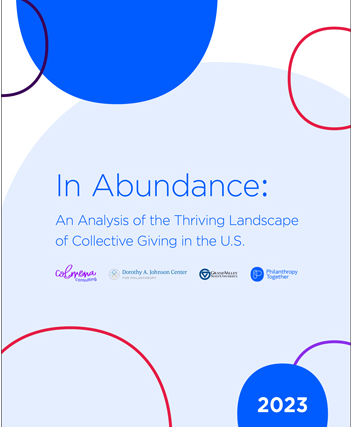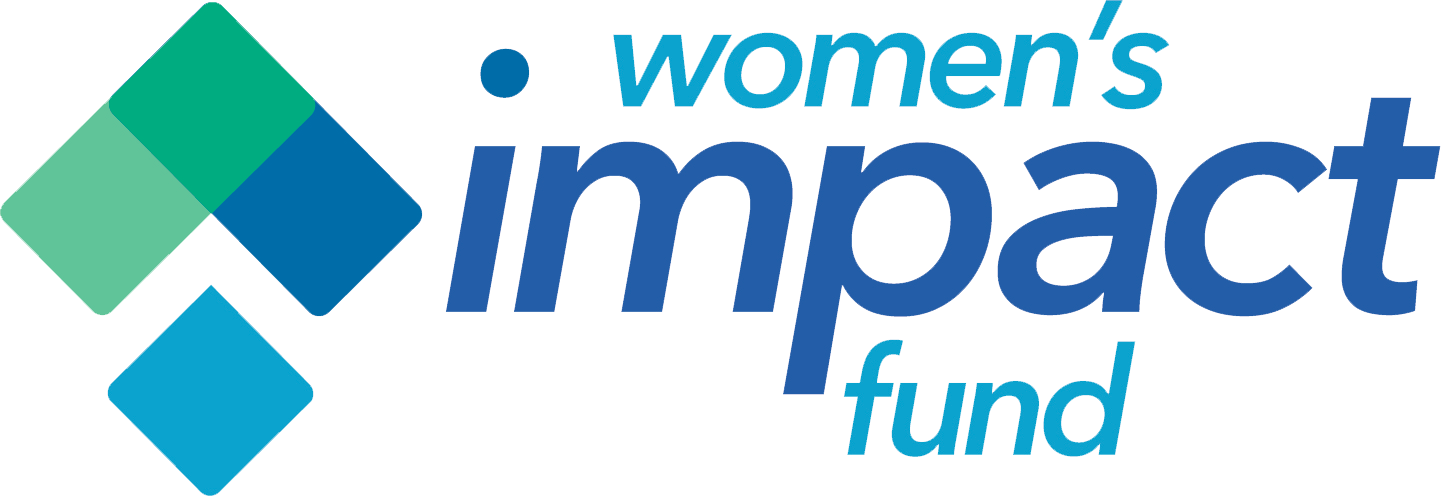New Research on Collective Giving Highlights Increasing Impact
By Aimee Greeter

The Dorothy A. Johnson Center for Philanthropy at Grand Valley State University, Philanthropy Together, and Colmena-Consulting recently released their study’s results on collective giving’s impacts. “In Abundance: An Analysis of the Thriving Landscape of Collective Giving in the U.S.” documents the seismic changes in this area in recent years and highlights how and why these changes are occurring. The study reveals five key findings:
Collective Giving is Democratizing and Diversifying Philanthropy
Collective giving has experienced remarkable growth, with nearly 4,000 collective giving groups mobilizing approximately 370,000 philanthropists to donate $3.1 billion between 2017 and 2023, and it is projected to double again in the next five years. Women play a significant role in these collective giving groups, with 84% of surveyed leaders reporting majority female membership and 60% reporting exclusively female membership. Additionally, collective giving is reshaping the narrative around who is a “philanthropist” by actively involving donors from historically marginalized groups and communities and encouraging them to embrace their identity as a donor and/or philanthropist.
Collective Giving Greatly Expands What Gets Funded
Collective giving groups do more than lean into equity in their funding decisions, they prioritize it, with 60% of leaders intentionally embedding racial and ethnic equity in their giving strategies. This commitment to address overlooked issues and communities is important since 80% of respondents identified this gap in mainstream philanthropy as their primary reason for participating in collective giving. In their funding, groups predominantly support community-based organizations, with 83% focusing on supporting organizations that aid marginalized communities and 55% supporting organizations with budgets under $1 million, further demonstrating a dedication to equity and inclusion. Moreover, collective giving emphasizes place-based philanthropy, with 93% of groups drawing members from a single locale and 70% stating their funds stay within their home state, reflecting a localized approach to addressing community needs.
Collective Giving Pushes the Bounds of How Philanthropy is Practiced
Collective giving groups are working hard to redefine what counts as “giving,” expanding beyond traditional monetary donations. Instead, they are encouraging members to view support through all “5Ts”: Time, Talent, Treasure, Testimony, and Ties. Additionally, these groups are looking to serve as sources of additional benefits, including platforms for donor education. This is particularly true for the topics of diversity, equity, and inclusion, areas in which 77% of members reported a positive increase in their learning.
Collective Giving Deeply Impacts Members Themselves
Participation in collective giving groups significantly improves members’ overall health, wellness, and sense of agency, with 77% of respondents expressing an increased belief in their social influence and 55% reporting positive impacts on their ability to lead healthy lives. These groups also cultivate a strong sense of belonging, purpose, and connection, with 82% of members joining to build relationships with like-minded individuals and 91% experiencing an enhanced sense of community belonging. Furthermore, collective giving enhances members’ professional pursuits by serving as a catalyst for professional development, aligning career pursuits with values, and expanding networks, particularly within the social change field.
Collective Giving is a Catalyst for Social Cohesion and Change
Collective giving groups function as “schools of democracy,” with decision-making processes ranging from consensus (27% of groups) to majority rules (53% of groups), fostering robust civic discourse and enhancing members’ ability to engage with dissenting voices. These groups also foster bonds within and between communities, creating social capital through shared identities and connections, while spurring deeper levels of civic engagement by increasing advocacy efforts and political donations, and providing opportunities for civic engagement.
Overall, this research highlights the vibrancy of collective giving in the U.S. and its potential to drive meaningful social change through collaborative and community-driven approaches to philanthropy.
The complete report can be found here.


